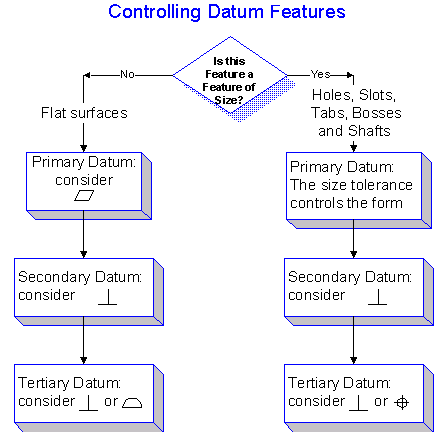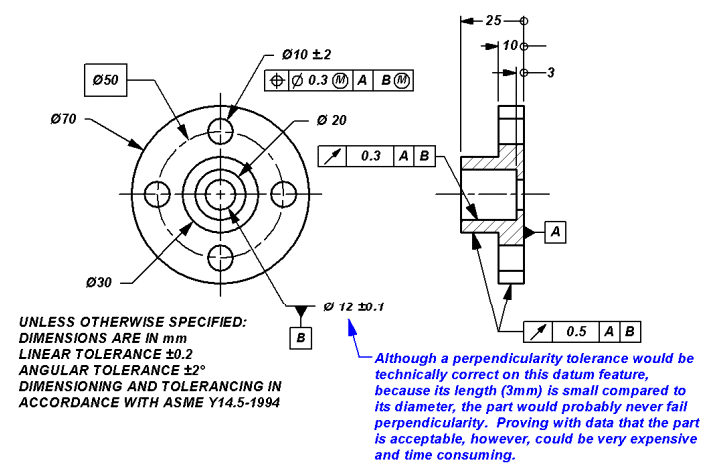| Tie
Your Datum Features Together - But Not Too Much!
Aprils Tip pointed out
the importance of applying flatness to a primary datum feature
that is a plane surface if datum targets or a constraint note
are not used. The secondary and tertiary datum features should
be related back to the primary. There is a difference between
a datum, that is theoretical, and a datum feature, that is an
actual feature on a part. These datum features should be
geometrically controlled. Although the Y14.5 standard in
section 4.3.3 the Standard states "Consideration shall be
given to controlling the desired accuracy of the datum
features by applying appropriate geometric tolerances. ",
nearly all of the figures omit these geometric tolerances. For
most parts the following flow chart may be
used.
|

|
Although this
flowchart won't work all of the time, it does work on
most parts. On parts such as sheet metal where a
secondary datum feature is usually very short the part
will probably always meet the control but because it is
so short, it will be nearly impossible to collect data
to prove that the process is capable. Also, depending on
the shape of the part, the tertiary datum feature may
require a location control (position or profile)
relative to the primary and secondary datums rather than
perpendicularity.
|
|
Although this
flowchart won't work all of the time, it does work on
most parts. An exception might be on parts where the
dimension of the secondary datum feature that is
perpendicular to the primary datum is small. It may be
impractical to collect data to prove that the process is
capable of holding the perpendicularity (see figure). In
such cases the process capability for perpendicularity
is usually sufficient. A perpendicularity control is
probably not necessary and would only cause unnecessary
inspection time. |
|

|
|
Depending on the
shape of the part, the tertiary datum feature may
require a location control (position or profile)
relative to the primary and secondary datums, rather
than perpendicularity. Ask yourself if you need to know
where this feature is relative to the primary and
secondary datum features. |
|

| |